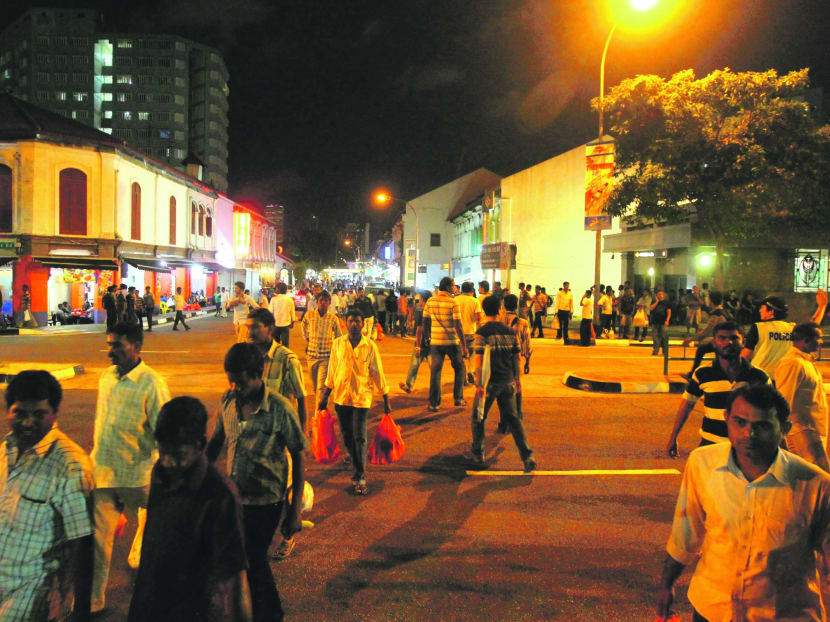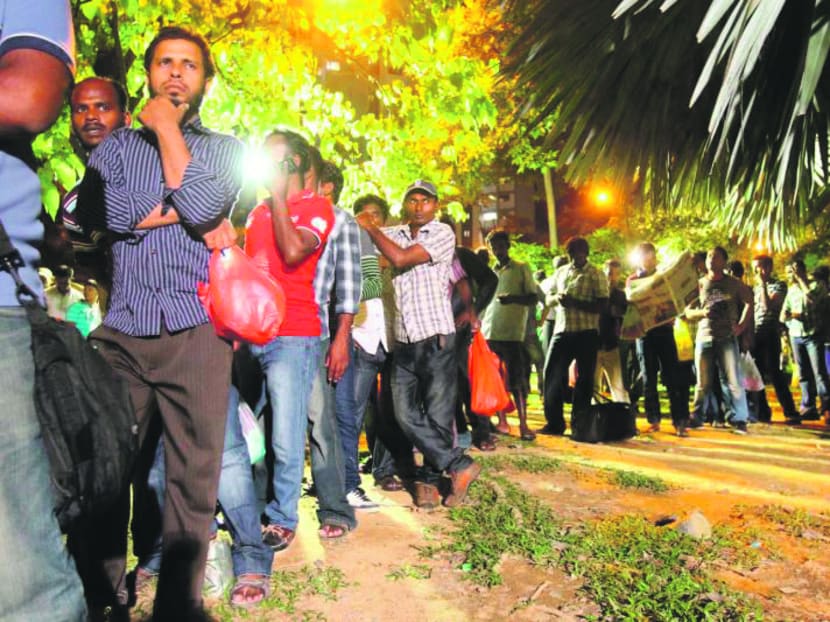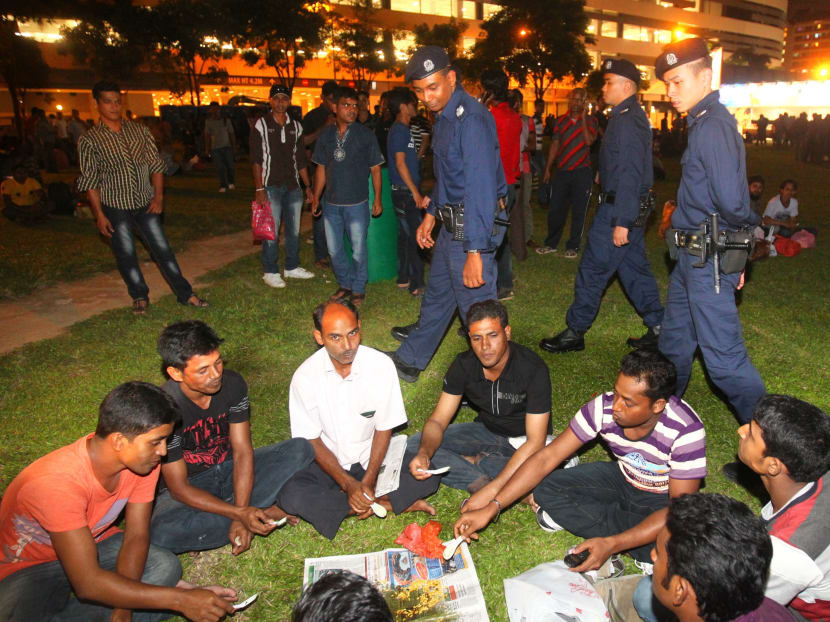Views divided on how to reduce congestion at foreign worker areas
SINGAPORE — Despite the Little India riot in December and the subsequent fallout — where police presence was increased and curbs on alcohol sale and consumption were imposed — some foreign workers have not stopped going to the area whenever they have time off from work.



SINGAPORE — Despite the Little India riot in December and the subsequent fallout — where police presence was increased and curbs on alcohol sale and consumption were imposed — some foreign workers have not stopped going to the area whenever they have time off from work.
Mr Rahman Jahinur, 23, is one of them. He said he prefers to run errands in Little India at least once every fortnight on a Sunday or a day off, even though his dormitory in Yishun and the nearby area have most of the services he needs, such as automated teller machines and provision shops.
Not only are the groceries cheaper in Little India, it is also home to a community “where all my friends come together”, the Bangladeshi construction worker said.
Other foreign workers TODAY spoke to expressed similar sentiments. Every Sunday, Mr Komoruidian, 25, makes the journey from his quarters in Jurong to Little India. He welcomed the fact that he can get everything he needs from the supermarket in his dormitory and shops in the neighbourhood. But nothing beats being in Little India where he can meet his “friends and brothers”, he said.
On Monday, the Committee of Inquiry into the Little India riot released its full report. Among its recommendations was to make more services and amenities available to foreign workers outside of areas where they usually congregate. It noted that areas such as Little India and Geylang are “social meeting points” which are desirable to maintain, but it “may be possible to reduce the size and density of the crowds in these areas by having more locations where the services and amenities (which) workers need to access (would be) available”.
It suggested government agencies and employers work with dormitory operators to bring in vendors that provide services required by foreign workers. “Dormitory-based provision shops, especially if reasonably priced, could also encourage some workers to stay at their dormitory rather than travel out to a congregation area,” said the COI, which also recommended improving the amenities — such as toilets, rubbish bins and sheltered walkways — at areas where foreign workers congregate.
Sociologists and non-governmental organisations said providing more facilities at dormitories in a bid to encourage foreign workers to stay in their quarters during their free time is not a long-term, healthy solution. Instead, there should be more public areas for foreign workers to socialise, they said.
Dr Zhou Min, a sociology professor from Nanyang Technological University, said: “Residential segregation (such as building more dormitories or cultural facilities) would only widen the distance between them and locals, making them feel foreign and unwanted and reinforcing stereotypes.”
Dr Tan Ern Ser, an Institute of Policy Studies sociologist, added: “Providing foreign workers more venues to hang out would be positive for all — residents and non-residents.” But the number of new users of an area should not overwhelm the regular users and the former should “not behave in a manner which can cause annoyance” to the latter, he said.
In fact, Mr Jolovan Wham, executive director of Humanitarian Organisation for Migration Economics (HOME) felt that all areas should be accessible to foreign workers.
Transient Workers Count Too (TWC2) had previously submitted to the COI that the approach should not be to reduce access to Little India, but to improve facilities in the areas.
Ms Debbie Fordyce, a TWC2 executive committee member, reiterated that foreigners “naturally gravitate to places where they find familiar food, entertainment, newspapers, remittance facilities and friends”. “The importance of community among workers in Singapore, far from home and family, longing for familiar faces and news from friends and family should not be overlooked,” she said.
Both Ms Fordyce and Mr Wham also pointed out that there are insufficient dormitories to house the foreign worker population here. “There is no point talking about having more amenities when the more urgent priority is building dormitories that can meet their basic needs,” Mr Wham said.
However, Members of Parliament (MPs) TODAY spoke to felt that it will be useful for more amenities to be built in the dormitories or near the premises, as this would make it more convenient for the foreign workers.
MP for Mountbatten, Mr Lim Biow Chuan, said: “The main thing is to spread them out a bit so that the numbers are not too overwhelming. If there are too many foreign workers in any one particular place, it will be of concern to most people.”
MP for Chua Chu Kang, Mr Zaqy Mohamad, said residents would be concerned if a crowd of foreign workers becomes too visible in an estate. For instance, when there are longer queues at the bus interchanges, he said.
MP for Moulmein-Kallang, Ms Denise Phua, said the varied needs of foreign workers should be analysed in order to address the current situation where all their needs are met only at existing areas where they congregate. “It is important that we learn from the problems faced by residents in the traditional areas of congregation, so residents near the dorms do not face the same challenges.”






